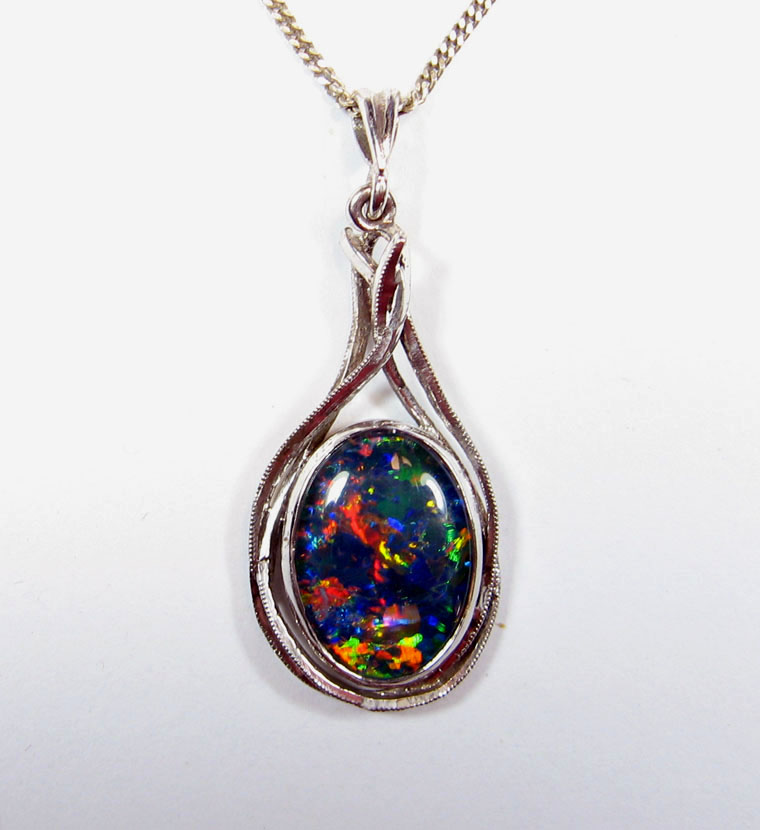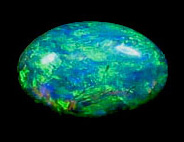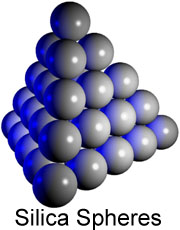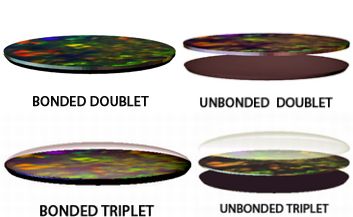The name opal comes from the Latin word “opalus” meaning precious stone and from the Greek word “opallios” which I am told means “to view a change of colour”. In modern day parlance, opal dealers refer to this characteristic as the play of colour which creates a magically captivating, spectacular show of multicoloured light patterns unlike any other gemstone, where no two opals are exactly the same.
Opal is the birthstone for the month of October, and the anniversary stone for the 14th and 18th years of marriage. The spiritual and healing qualities of opal which contains every colour of all birthstones makes opal stand alone amongst gemstones, providing all the colours recommended to maintain harmony and balance. Opal has reputed healing qualities and the ability to enhance mental capacities such as productivity and creative thought.

Australian Opals
Opal is Australia’s national gemstone, producing over 90% of the world’s precious opal supply. Different varieties of opal are found and mined predominantly according to region, but overall, Australian opal can only be found deep inland in the central part of the continent.
Black Opal & Semi Black Opal:
The rarest and most precious opal in the world are high quality solid black opals, exhibiting dazzling sharpness and incredible depth of colour, making solid black opals the most valuable and sought after of all the opal varieties. Black opal & semi black opal are found mainly in Lightning Ridge (New South Wales), some also at Mintabie (South Australia) and to a lesser extent Coober Pedy (Sth. Australia).

White or Light Opal:
White or light opal is a naturally formed milky white opaque solid opal variety with a softer generally more subdued play of colour than black opal. White or light opal is mostly mined in South Australia at Coober Pedy and Mintabie.

Crystal Opal:
Crystal opal is also referred to as a light opal which can vary between transparent to translucent varieties of solid opal where the colours are visible inside and below the opal surface. Some crystal opals display such intense depth of colour, and so dark within, that such opals are referred to as “black crystal opal”. Crystal opal is predominantly found in South Australia.

Boulder Opal:
Boulder opal is a naturally formed opal variety consisting of a fine uneven layer of opal deposited on and in the fissures of ironstone or sandstone base rock. Boulder opal generally has a black or very dark background colour giving it a similar appearance to black opal. Boulder opal is unique to western Queensland.

Matrix Opal:
Matrix opal is a porous opal mined in a light colour, the opal is cut and polished, then carbonised by treating it with sugar and sulphuric acid. The end result is an opal which looks like a good to high quality black opal. Matrix opals have vibrant intense colours which make them extremely popular, and the process is permanent. Matrix opals come mainly from Andamooka (South Australia), and is commonly referred to as Andamooka matrix opal.

Assembled Opals:
Assembled opals have a thin slice of natural opal which is bonded to a layer of dark backing material which considerably enhances the opals’ natural colours. Be mindful, that a thin slice of assembled opal is generally cheaper than most solid opals. However, assembled opals can range from souvenir to gem quality with the best specimens revealing brilliant colours akin to high quality black opal.
There are two types of assembled opal, they are in order of value, doublets and triplets.
Doublet opals are as described above, being a slice of natural opal, (doublet opals having thicker slices than triplet opals), bonded to a layer of dark backing material.
Triplet opals consist of a thinner slice of natural opal bonded to a dark backing material, with the addition of a bonded clear crystal domed top to protect the opal slice. Triplet opals are almost always oval shaped, whilst doublet opals can be any shape or free form. A word of caution regarding the long term care of assembled opals, both doublet opals and triplet opals are water sensitive and should not be immersed in water.
Opal Patterns
The pattern of colour segments which forms the amazing play of colour in precious opal is indeed unique to each and every opal. However, there are certain general pattern varieties some of which I am listing below.
Harlequin Opal: The Harlequin opal pattern consists of a mosaic or chequerboard pattern of multicoloured patches. A true Harlequin opal is extremely rare and highly sought after.
Flagstone Opal:
The Flagstone opal pattern has large sections of colour with straight edges in a random pattern.
Ribbon Opal:
The Ribbon opal pattern has narrow cascading lines of rolling colour.
Straw Opal:
The Straw opal pattern has thin overlapping strips of colour randomly placed.
Chinese Writing Opal:
The Chinese writing opal has thin overlapping strips of colour resembling Chinese characters.
Picture Opal:
Picture opal are opals which contain patterns resembling objects such as scenery,animals or any object.
Floral Opal:
Floral opal is as the name implies, a pattern of random colours spread in a floral like fashion.
Rolling Flash Opal:
Rollingflash opal exhibits a strong wide rolling flash of vivid colour that suddenly appears as you turn the opal around.
Broadflash Opal:
Broadflash opal pattern has large sections of colour which flash as you turn the opal around.
Pinfire Opal:
Pinfire opal or Pin opal is composed of closely spaced specs of brilliant colour.
Opal Body Tone
Opal body tone is a major factor in determining the value of opals. Opal body tone refers to the underlying background colour density of all opals. The background or body colour of opal ranges from transparent opal through translucent opal and almost colourless opal to milky white opal, through pale coloured opal to dark greys and black opal. The darker the opal body tone the more spectacular and richer the opal play of colours. Black opal body tone is colour density graded from N1(darkest) to N4, grey opal body tone N5 to N6 and lighter opal body tones N7 to N9.
Formation of Opals
Approximately 150 million years ago the ocean covered the opal regions of central Australia. After the sea water receded, there were climatic changes that caused the lowering of the underground water tables. Silica solutions were carried down to deposit in cavities,faults and fractures in the ground and now millions of years later, these silica solutions formed into opal.
Essentially, opal is really a hardened mineraloid gel of hydrated silica, with varying water content which is usually between 3 and 10 per cent. Opals have a refractive index of 1.38 to 1.60, and a hardness of between 5.5 to 6.5 on the Mohs scale. (classifying the relative hardness of minerals ranging from 1 being talc to 10 being diamond.)
Chemical Formula for Opal: SiO2•n(H2O) with n being a variable number.
 The truly remarkable and unique thing about opal is it’s ability to display all the colours of the spectrum in a spectacular play of colour resulting from the interference and diffraction of light passing through tiny silica spheres in the microstructure of a precious opal. Light is diffracted from these spheres at various wavelengths. The size of the opal silica spheres determines which colour is produced. For example, the larger the sphere the longer the wavelength, the more redness in the colour. In contrast, the smaller the sphere the shorter the wavelength, the more greens, blues and violet hues will dominate. The more uniform the size and array of spheres line up the more intense the play of colour. The manner in which the many arrays of spheres line up also produce the various pattern varieties found in opals. (See opal patterns – above). Consequently the bright rainbow colours of precious opal as they appear to the human eye, will magically move and change depending on the angle at which the opal is viewed.
The truly remarkable and unique thing about opal is it’s ability to display all the colours of the spectrum in a spectacular play of colour resulting from the interference and diffraction of light passing through tiny silica spheres in the microstructure of a precious opal. Light is diffracted from these spheres at various wavelengths. The size of the opal silica spheres determines which colour is produced. For example, the larger the sphere the longer the wavelength, the more redness in the colour. In contrast, the smaller the sphere the shorter the wavelength, the more greens, blues and violet hues will dominate. The more uniform the size and array of spheres line up the more intense the play of colour. The manner in which the many arrays of spheres line up also produce the various pattern varieties found in opals. (See opal patterns – above). Consequently the bright rainbow colours of precious opal as they appear to the human eye, will magically move and change depending on the angle at which the opal is viewed.
Having collected opals for many years, I have never tired of the fascination with these amazing miracles of nature. The numerous layers of silica spheres within precious opal are the masters of colour play in nature, orchestrating a dynamic magical light show to the beholder’s delight.

